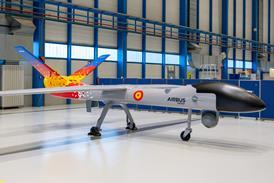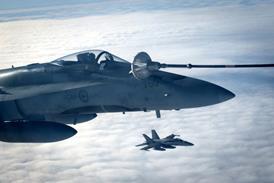The original bright revenue promises of the global alliances may have lost their lustre in today’s competitive reality, but initiatives in new areas such as distribution may revive early hopes that airlines could add more value together than apart
A popular rhetorical question that sceptics used to make a point was “suppose they gave a war and nobody came?” Ask the same question of global airline alliances and the answer is perhaps more revealing. Suppose the strategic alliances disappeared and went away? What would happen then?

The unfortunate answer is not that much, at least from the perspective of passengers, the people for whom alliances were supposed to have been created – with the notable exception of frequent-flyer mileage collectors and some large corporates with alliance-wide discounts. Not all chief executives would miss them much either. As one recently commented ruefully of alliance member get-togethers, the twice yearly meetings last just one-and-a-half hours and produced little of substance.
In hard dollar terms it is difficult to say how much carriers gain in extra revenue through their alliances, or how much they save through joint cost-cutting measures. Even individual airlines do not always know. Star Alliance and SkyTeam decline to reveal any figures, leaving only oneworld to offer an insight: its alliance fares and corporate sales products generated almost $400 million for the eight members last year. Of course the primary benefit to carriers comes from their main codeshare partners within the alliance framework. On mainline routes the revenue enhancing effect can be significant, and importantly, because the cost base is fixed, it all drops to the bottom line.
What alliances do not seem to stimulate to any great extent is markets. The alliances have, in the words of one analyst, “not done much except to steal market share from each other”. This is not to argue that their architects saw modern alliances as much more than a step toward the more desirable goal of true integration. However, no matter how desirable in business terms, consolidation faces tough regulatory hurdles.
That leads to another argument for alliance-building – alliances work if they have antitrust immunity so they can schedule and price with efficiency. Immunity is a wondrous thing, but the two allies with no immunity, American Airlines and British Airways, have done quite well, thank you, even though neither they nor their oneworld alliance has meaningful immunity on the crucial North Atlantic market. (The one exception is limited to American and Finnair.) Furthermore it is argued that alliances are supposed to lead to more open skies – and vice versa. Again oneworld anchors American and BA, with their strong position at London Heathrow, the most sought-after airport in Europe, is the one relationship that does not lie under open skies.
If, after reviewing these arguments and facts, the stranger viewing alliances for the first time asked what was after all so special, he might consider this: rather than fulfilling some of the earlier promises, the alliances are today becoming laboratories of innovation. Nowhere is this more true than in the realm of distribution and IT – already the newest frontier for saving-seekers at individual airlines. The Star initiative to select an alternative distribution system brings an enormous player to a fertile field and collects the kind of buying clout that at one time alliances thought they could muster for aircraft purchases.
Assuming the role of founding sponsor of a new technology presents potentially a far more profitable investment, and competition among the new technologies is keen enough that pricing is a far richer opportunity than with aircraft. Airlines can take far stronger hold of their future this way – alliances all the more so.
Through the technology channel the alliances are actively creating a new dynamic, one that combines more than purchasing power. The synergy of ideas is something far more active and positive than the concept of an alliance as a temporary stopgap in lieu of mergers and the belief that alliances are ways to spend less money or at best earn just a little more.
By combining the intellectual capital of numerous allies, the links created come to the heart of what alliances are all about. They are a nexus that binds allies together and provides routes to future, more intimate bonds.
Source: Airline Business























